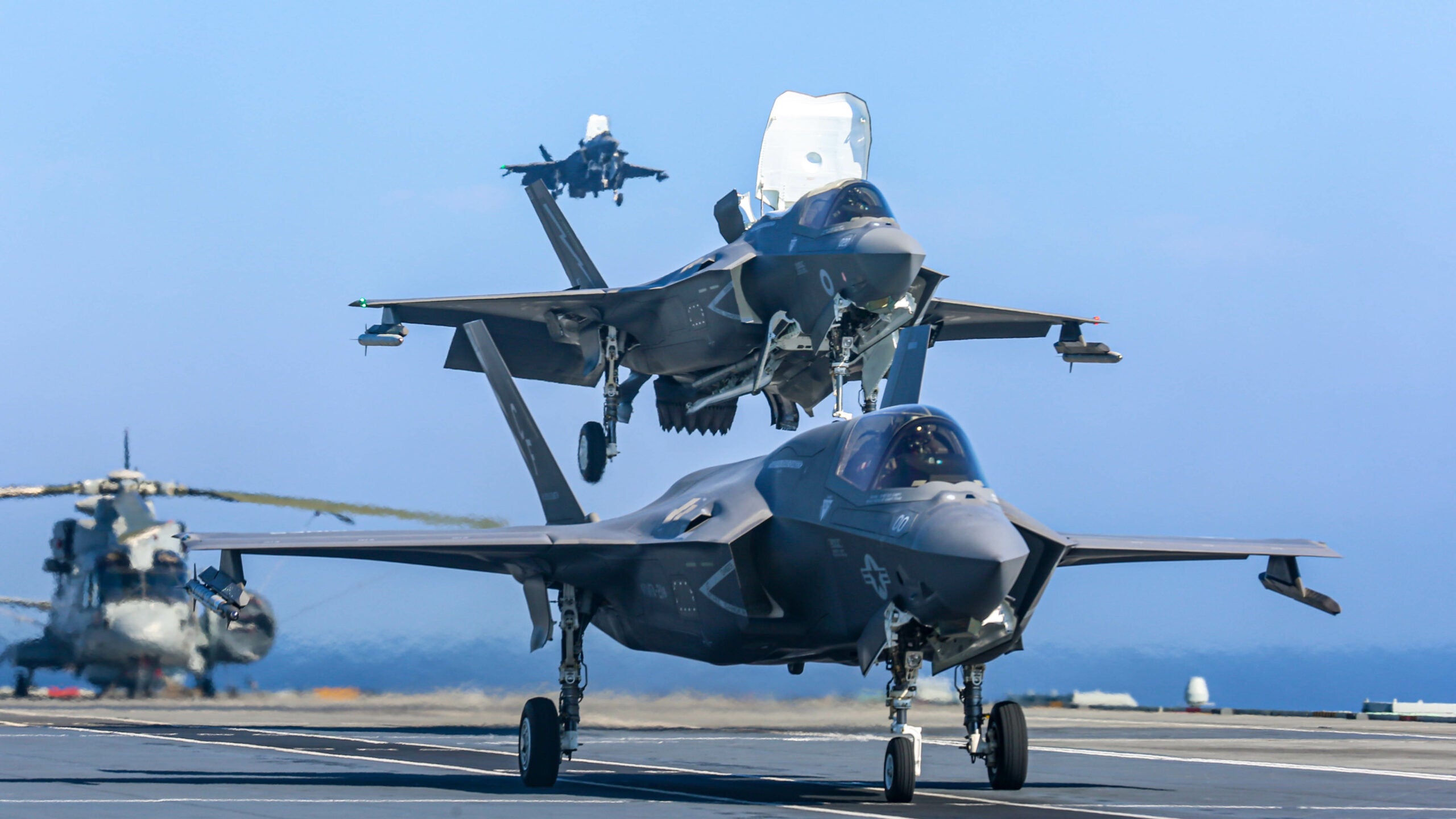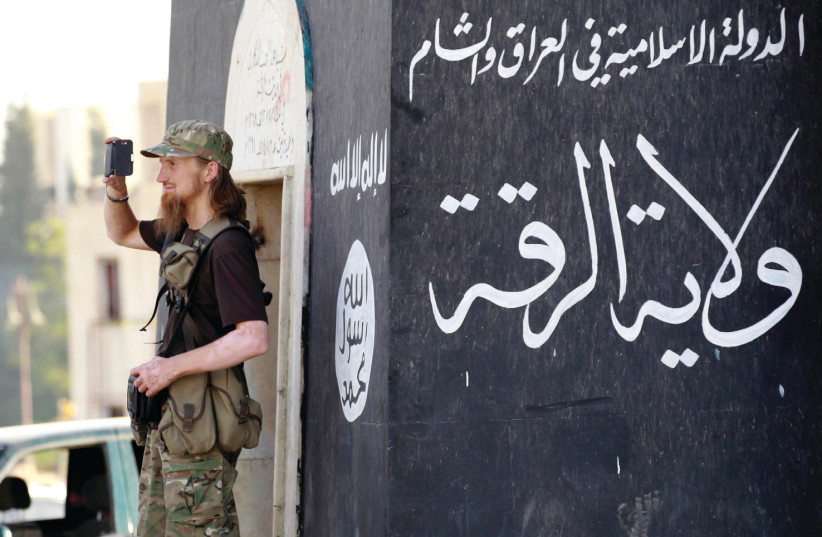The British Royal Navy’s flagship, the aircraft carrier HMS Queen Elizabeth, has launched its first combat missions, as part of the international coalition fighting ISIS in the Middle East. British and American F-35B Lightning stealth jets operating from its deck in the eastern Mediterranean have flown operational sorties over Iraq during the warship’s first operational cruise as part of Carrier Strike Group 21, or CSG21.
Official confirmation of the F-35B combat sorties came from the Royal Navy today, although some sources reported that HMS Queen Elizabeth and its embarked air wing actually began flying missions against ISIS in Iraq on June 18, a date that’s also reflected in official Royal Navy imagery releases. Meanwhile, the Daily Telegraph
stated that the jets first went into combat from the carrier last Sunday, June 20. So far, the U.K. Ministry of Defense has not disclosed if any weapons were employed by the jets, although unnamed defense officials confirmed to USNI News today that airstrikes had been flown.
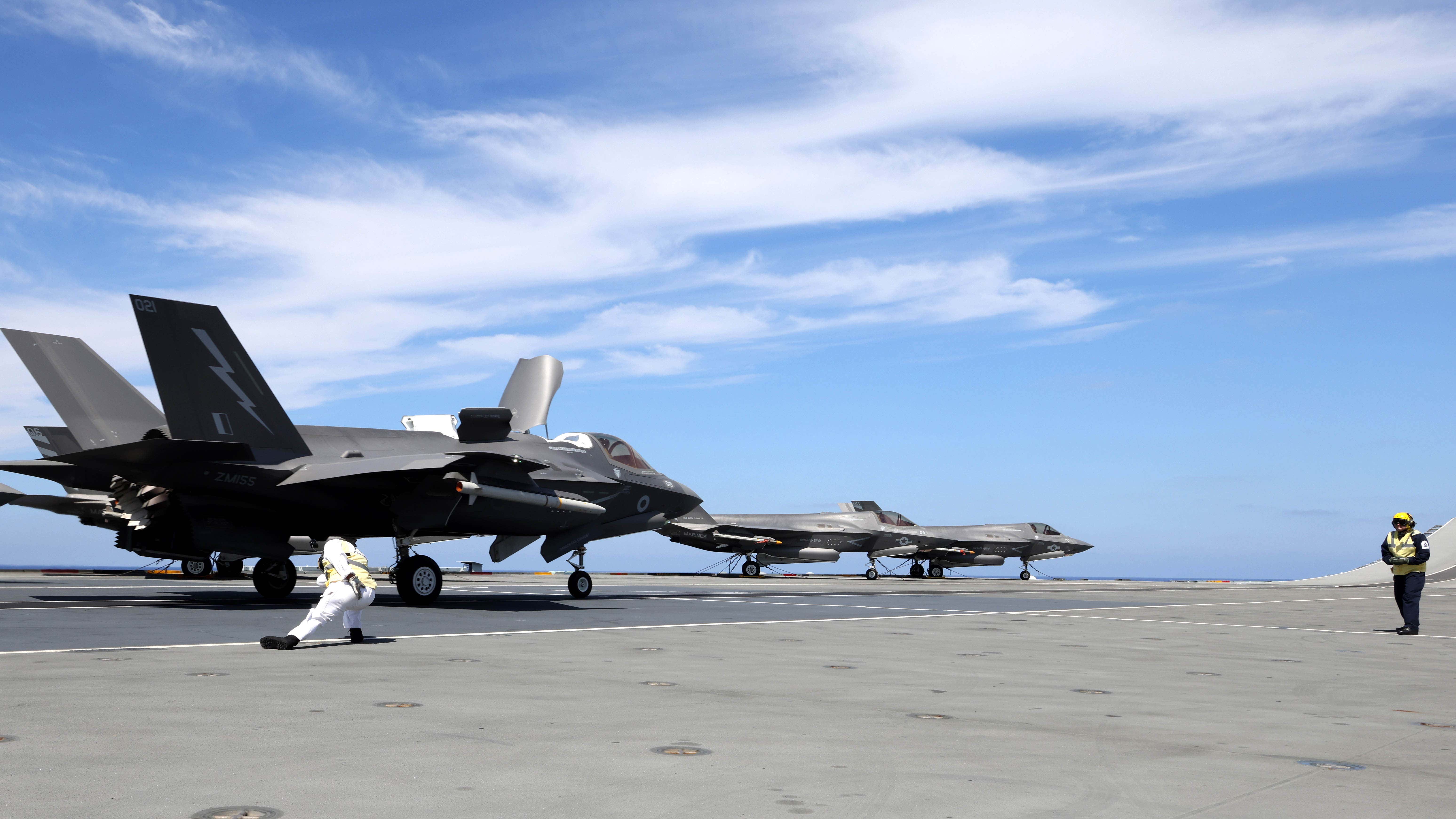
Crown Copyright
An F-35B Lightning from the RAF’s No 617 Squadron launching from HMS Queen Elizabeth for its first combat mission, in a photo dated June 18.
Either way, this is the first time that a Royal Navy carrier embarking fixed-wing aircraft has taken part in combat operations since the much smaller HMS Invincible took part in the U.K. response to the crisis in Sierra Leone in 2000. The last time that fixed-wing jets from a British carrier actually struck enemy targets was during the crisis in the Balkans in the mid-1990s when Sea Harriers were involved.
Eight of the F-35Bs on the carrier are provided by the RAF’s No 617 Squadron, the “Dambusters,” while another 10 are from the U.S. Marines Corps’ Marine Fighter Attack Squadron (VMFA) 211, the “Wake Island Avengers,” home-based at Marine Corps Air Station Yuma in Arizona, but currently under British command. The anti-ISIS missions have involved the Marine Corps jets, too. According to the British Ministry of Defense, this marks the first time that U.S. aircraft have launched into combat from a foreign aircraft carrier since 1943 when they flew from HMS Victorious in the South Pacific.
As for the rest of CSG21, as well as HMS Queen Elizabeth, the Royal Navy elements of the strike group consist of the Type 45 destroyers HMS Diamond and HMS Defender, the Type 23 class frigates HMS Kent and HMS Richmond, the replenishment tanker RFA Tidespring, the stores ship and fleet tanker RFA Fort Victoria, and an undisclosed Royal Navy Astute class nuclear attack submarine. They are also accompanied by the Arleigh Burke class destroyer USS The Sullivans, and the Dutch De Zeven Provinciën class frigate HNLMS Evertsen.
“The ability to operate from the sea with the most advanced fighter jets ever created is a significant moment in our history, offering reassurance to our allies and demonstrating the U.K.’s formidable air power to our adversaries,” said U.K. Defense Secretary Ben Wallace. “The Carrier Strike Group is a physical embodiment of Global Britain and a show of international military strength that will deter anyone who seeks to undermine global security.”
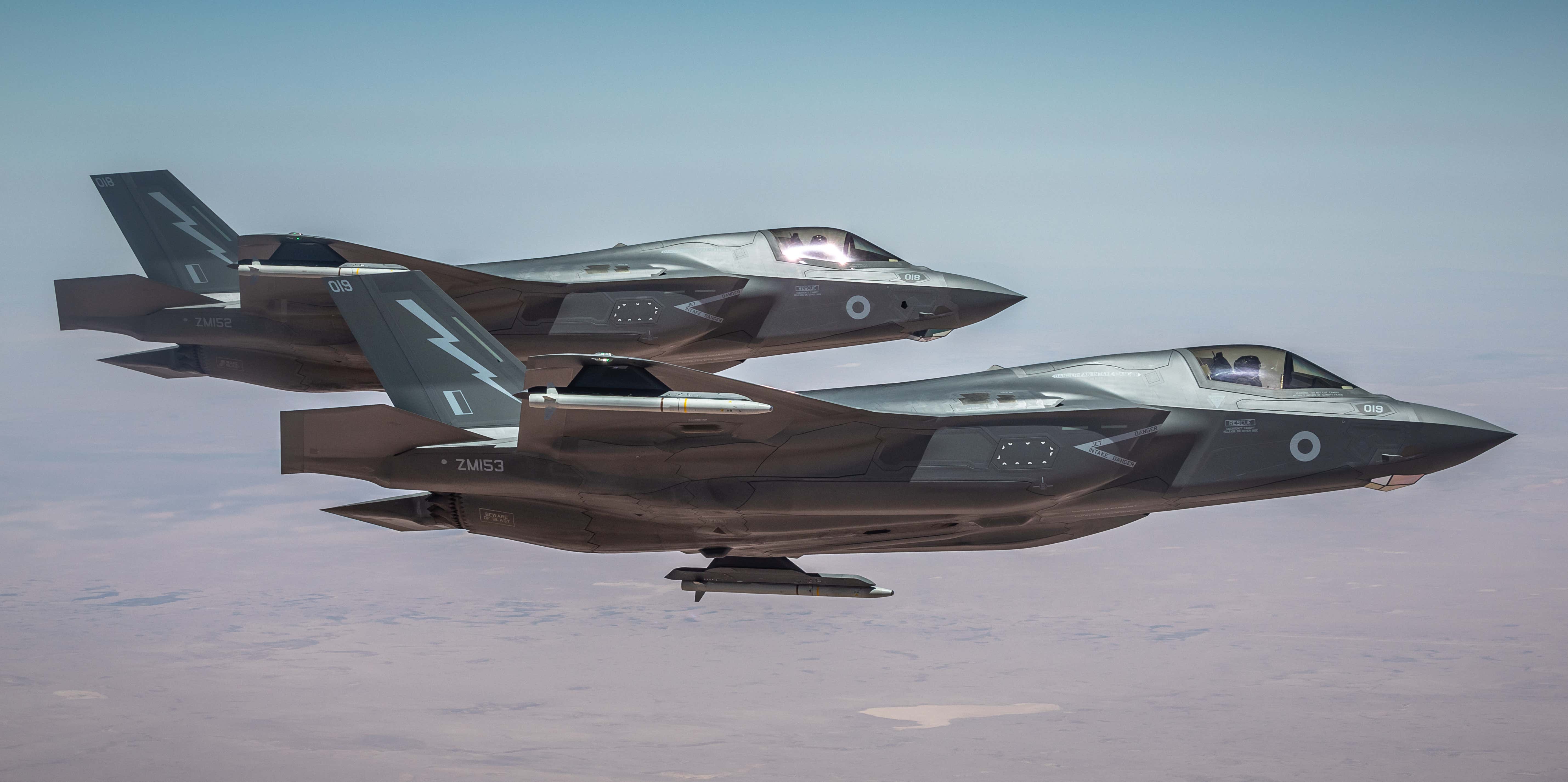
Crown Copyright
Two Royal Air Force F-35Bs armed with ASRAAM missiles for self-defense conduct a sortie in support of Operation Shader.
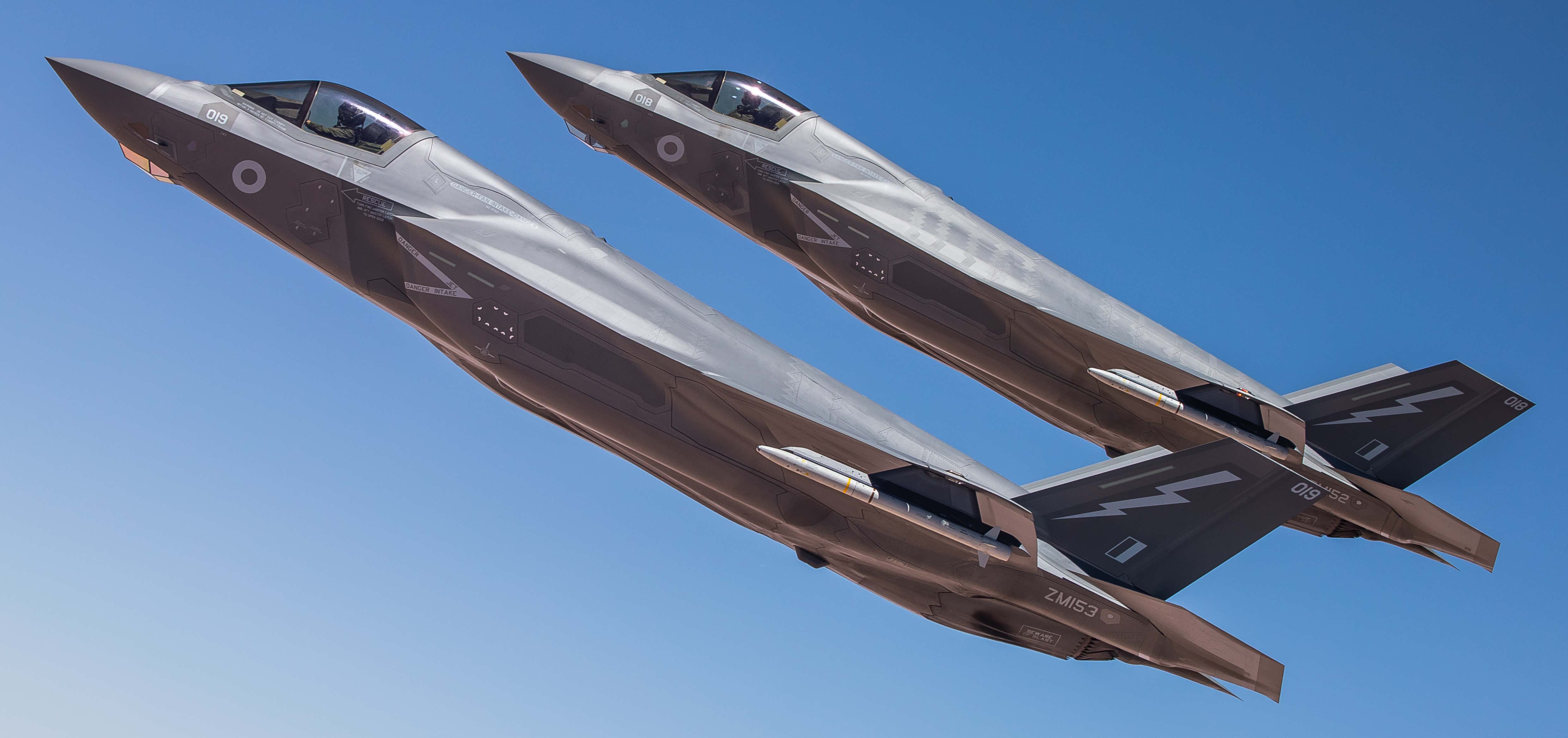
Crown Copyright
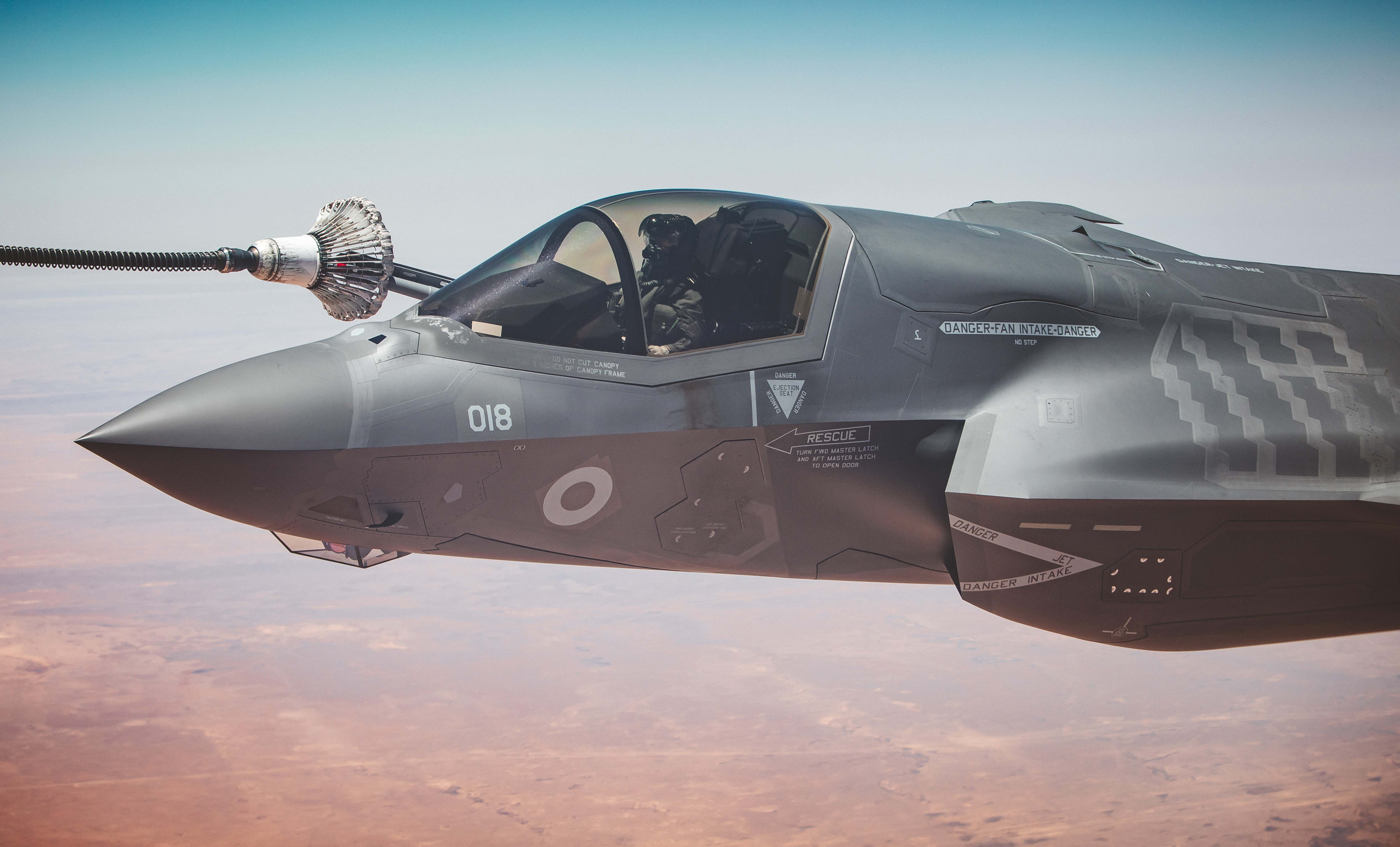
Crown Copyright
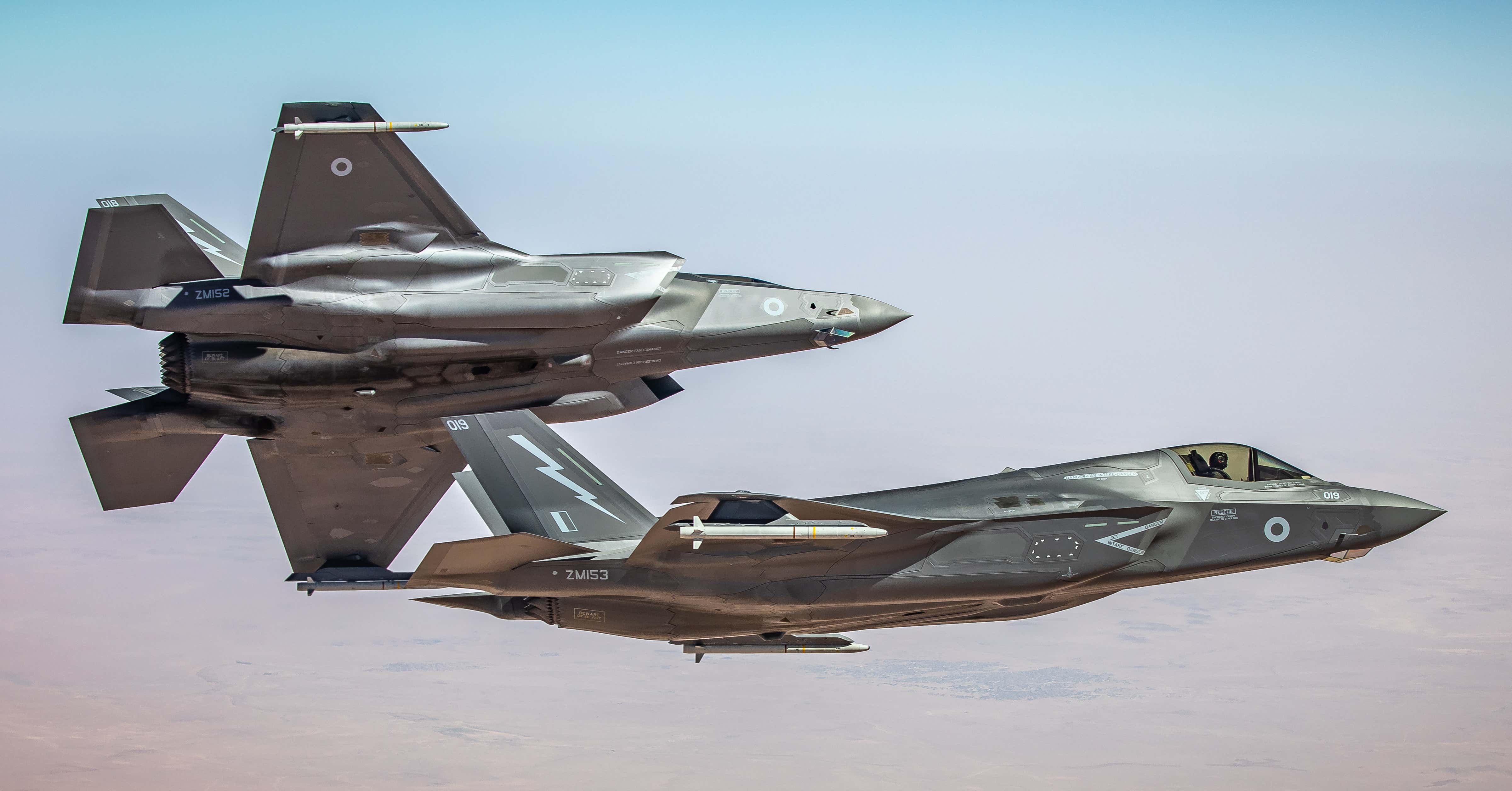
Crown Copyright
Unconfirmed open-source flight-tracking data from yesterday suggested that the F-35Bs were also conducting these missions with support from both Royal Air Force (RAF) E-3D Sentry Airborne Warning And Control System (AWACS) aircraft operating from the RAF’s base at Akrotiri in Cyprus, also in the eastern Mediterranean, as well as RAF RC-135W Rivet Joint electronic surveillance aircraft flying from the United Kingdom. While AWACS is used primarily to monitor airspace movements, the Rivet Joint gathers and analyzes electronic emissions from communications, radar, and other systems.
Further airborne early warning in the vicinity of the carrier itself will likely have been provided by the Crowsnest Merlin HM2 helicopters from 845 Naval Air Squadron, three of which are embarked on HMS Queen Elizabeth for what is the type’s first operational deployment.
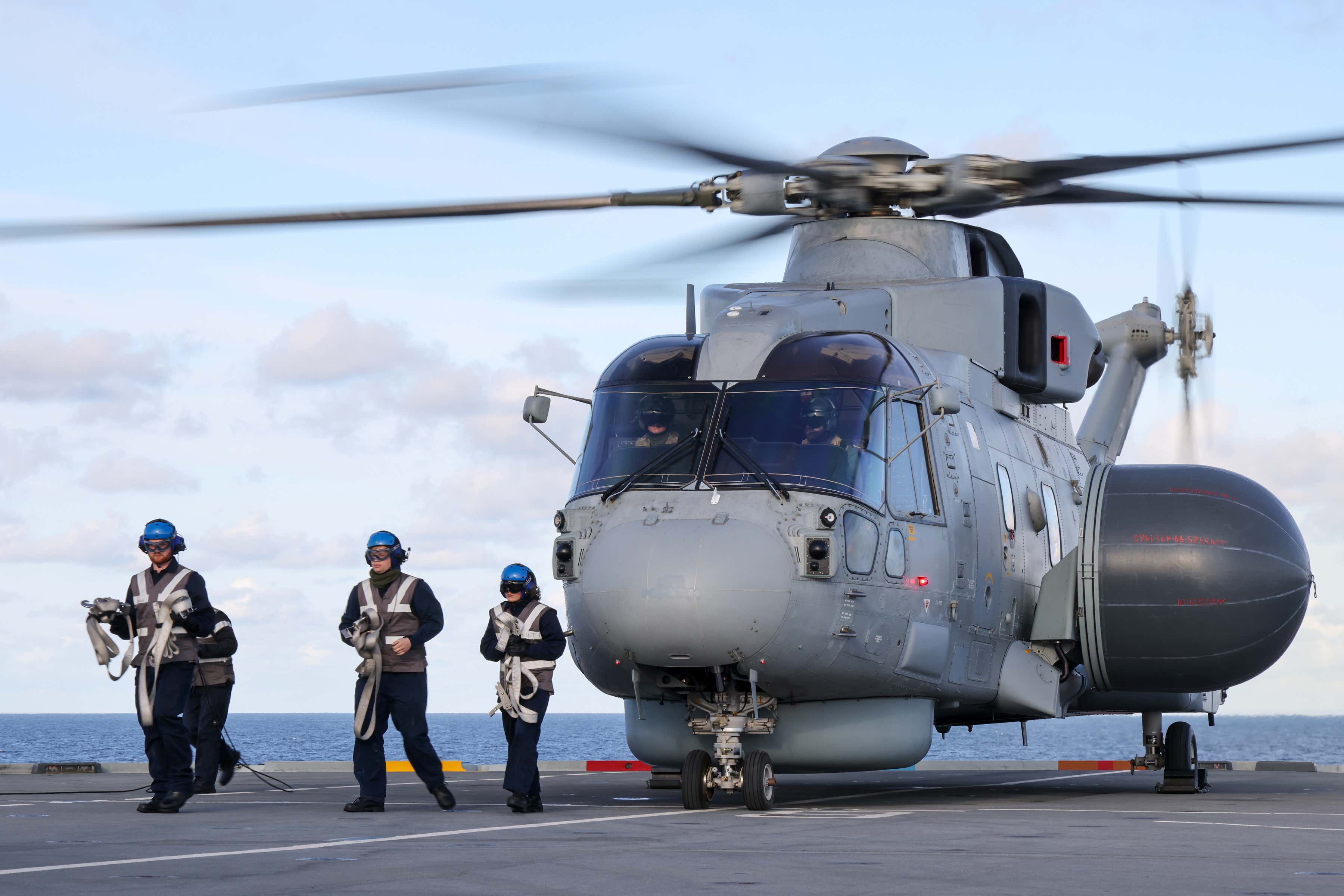
Crown Copyright
A Crowsnest Merlin HM2 helicopter on HMS Queen Elizabeth.
Meanwhile, at least two RAF Voyager tankers were apparently available to provide aerial refueling to the F-35Bs last Sunday. These assets will have enabled the F-35Bs to remain on station longer, addressing a long-standing criticism over their range on internal fuel. The United Kingdom does not have any organic, carrier-based aerial refueling capacity.
“At the moment, we’re taking on the lion’s share of that operation over Iraq, which is a fantastic […] feather in our cap. But an achievement that ‘A’, we’re trusted and ‘B’, that we’re able to do that,” Commodore Steve Moorhouse, the commander of the U.K. Carrier Strike Group, told reporters last Sunday.
Commodore Moorhouse’s statement has been taken by some sources to indicate that the United Kingdom is currently bearing the brunt of the anti-ISIS mission in Iraq, while the U.S. military meanwhile focuses on its continuing withdrawal from Afghanistan. The Pentagon recently announced it would cut down the number of U.S. fighter squadrons — as well as Terminal High Altitude Area Defense (THAAD) and Patriot missile defense systems — deployed in the Middle East as part of a wider effort to reduce its presence in the region.
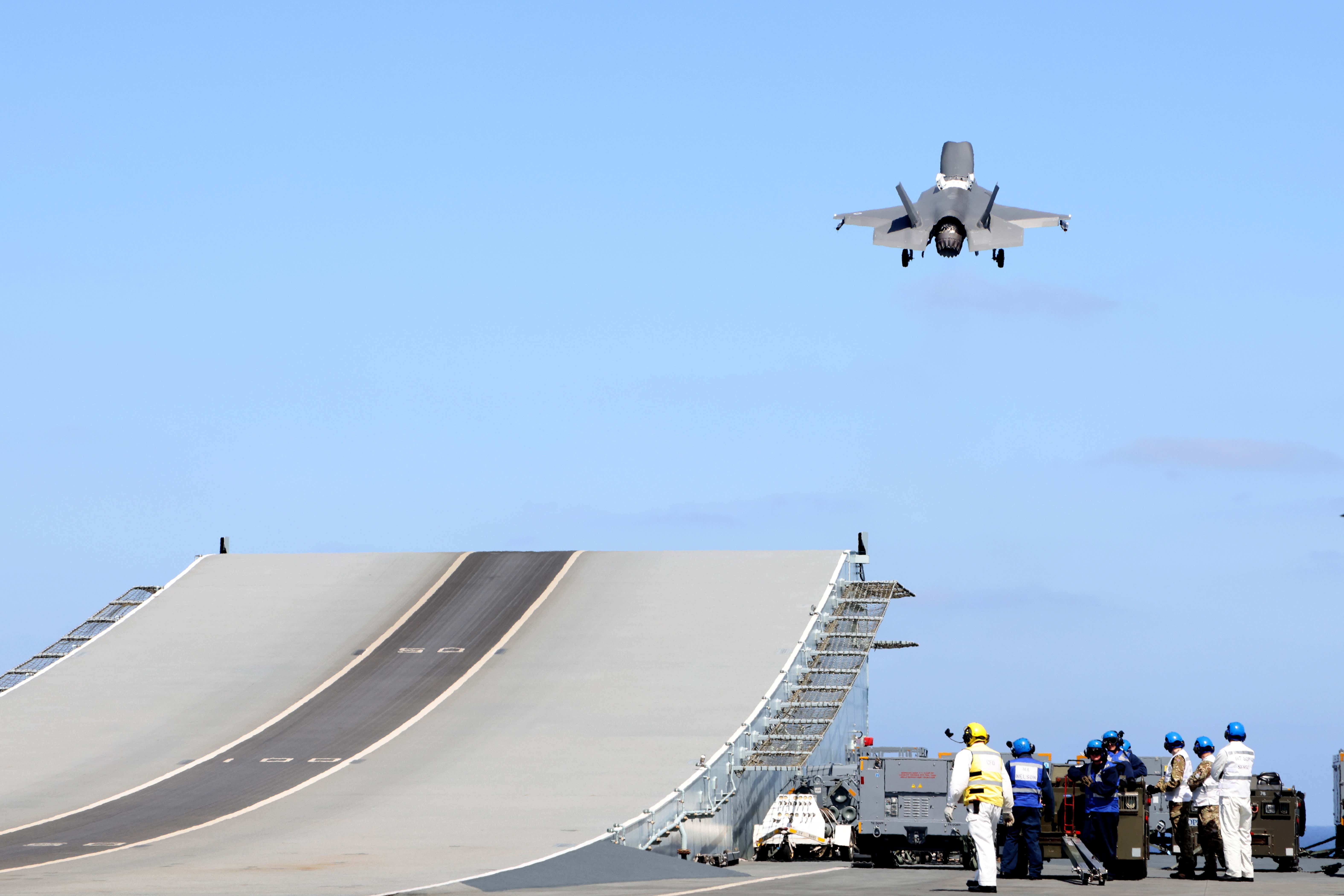
Crown Copyright
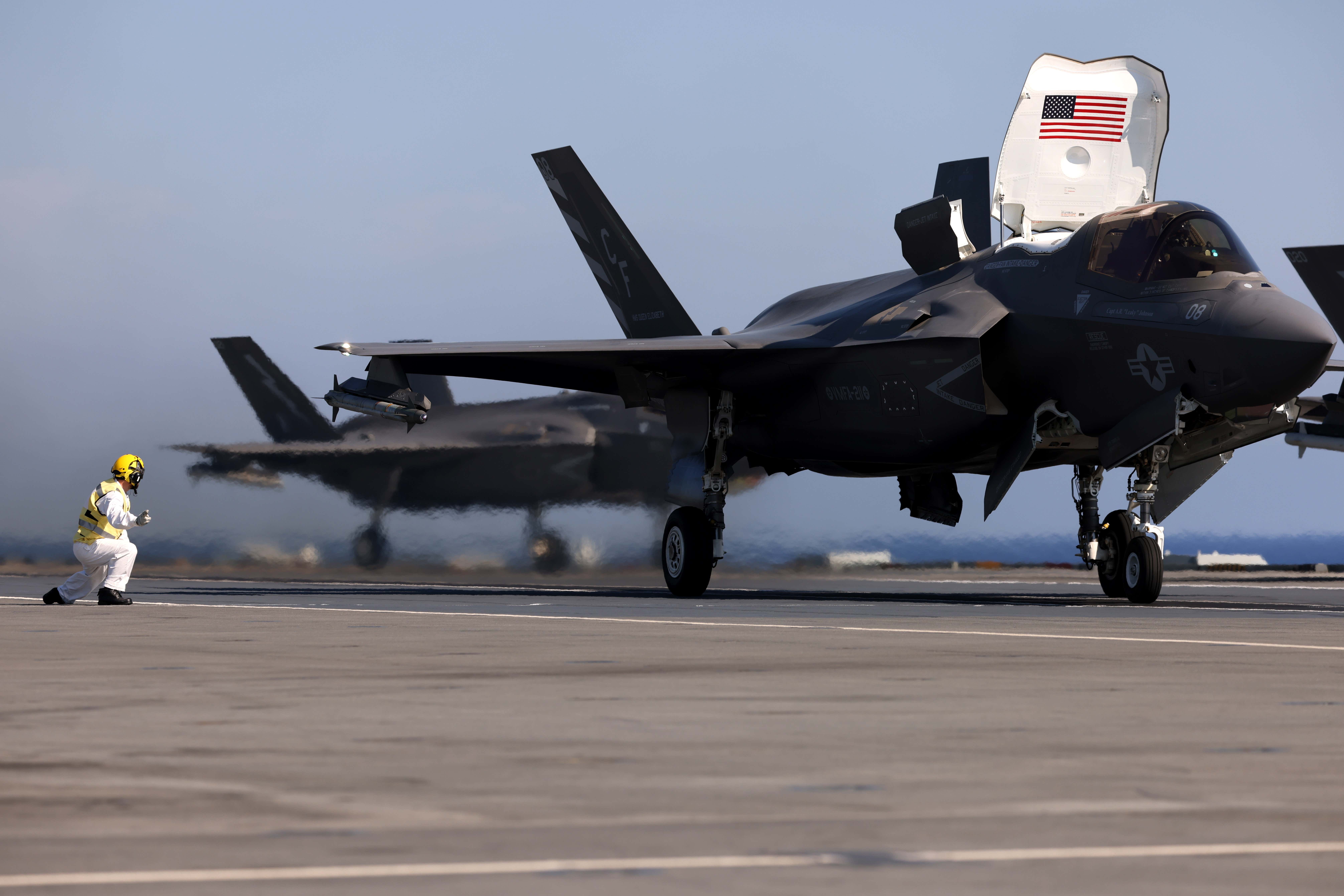
Crown Copyright
However, Moorhouse may well have been referring to the carrier-based F-35Bs taking over the mantle from RAF Typhoon fighter jets that are based at RAF Akrotiri.
More generally, details of the types of missions that the F-35Bs flying from Queen Elizabeth have been undertaking have not been disclosed. Moorhouse did describe the Joint Strike Fighters as the “eyes and ears” in theater, thanks to its “hugely, hugely capable radar and sensor suite.” However, beyond the type’s basic electro-optical targeting capabilities, and synthetic aperture radar, it isn’t immediately clear what unique capabilities it can provide to commanders tasked with defeating ISIS on the ground.
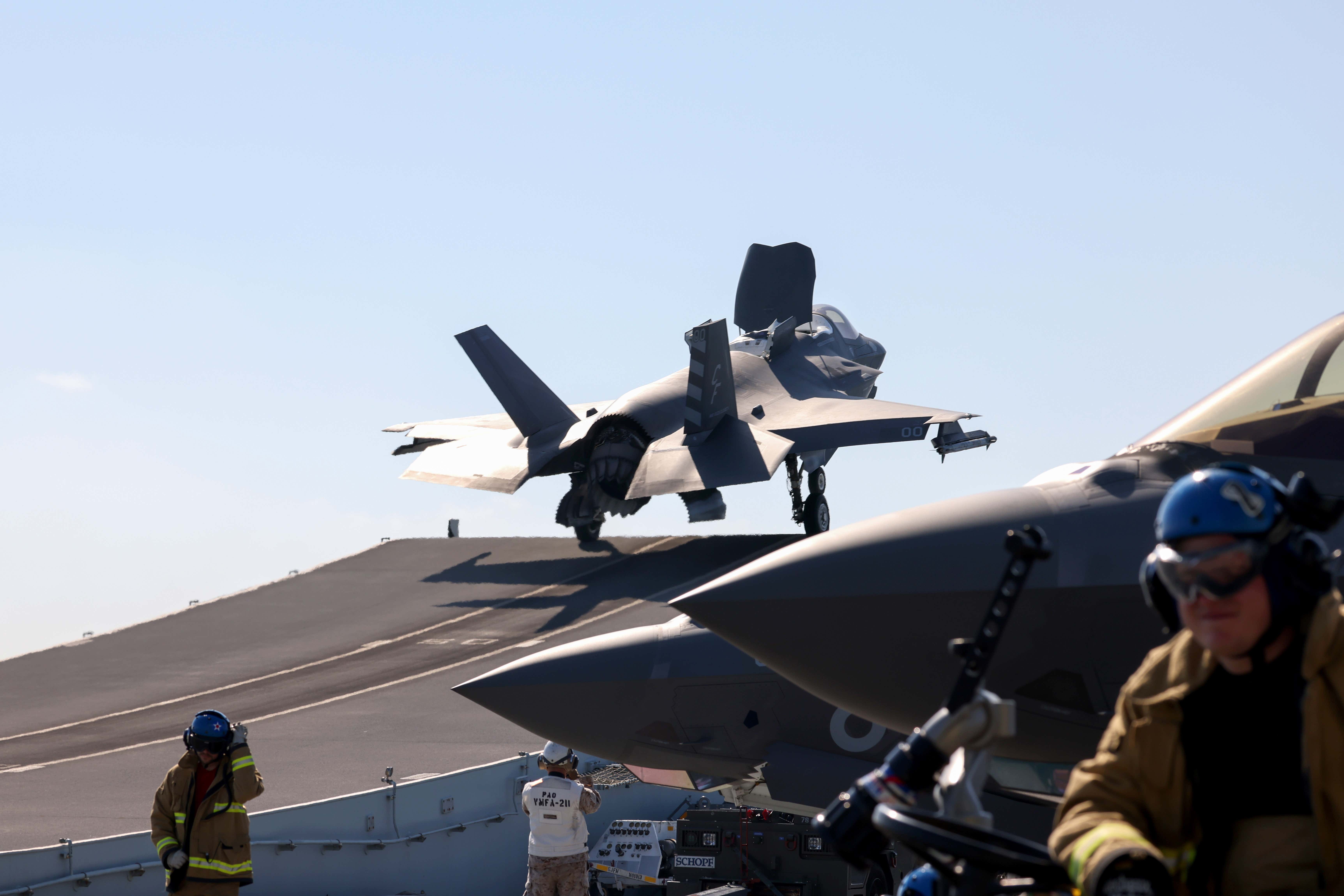
Crown Copyright
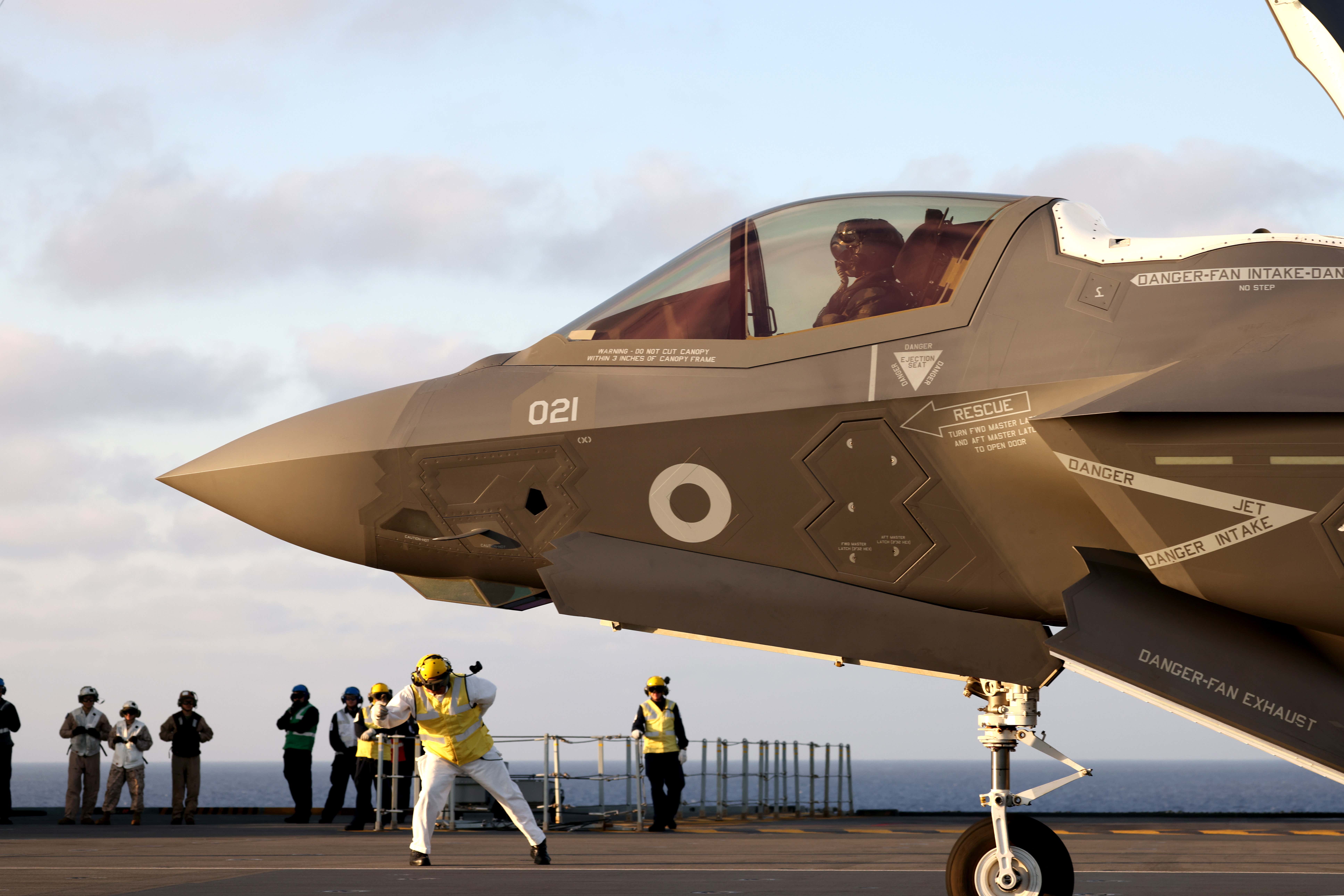
Crown Copyright
The debut appearance of the British carrier in the Mediterranean has prompted interest from Russia, which maintains a significant air and naval presence in Syria. Moorhouse noted that an unnamed Russian Navy warship had come within 16 miles of the carrier. A Russian Navy Admiral Grigorovich class frigate has been noted trailing CSG21 and the Royal Navy says Russian submarines are tracking their movements, too.
According to the Daily Telegraph, the first F-35B combat mission last Sunday saw two jets tasked against ISIS, while another two were scrambled to investigate Russian aircraft overhead.
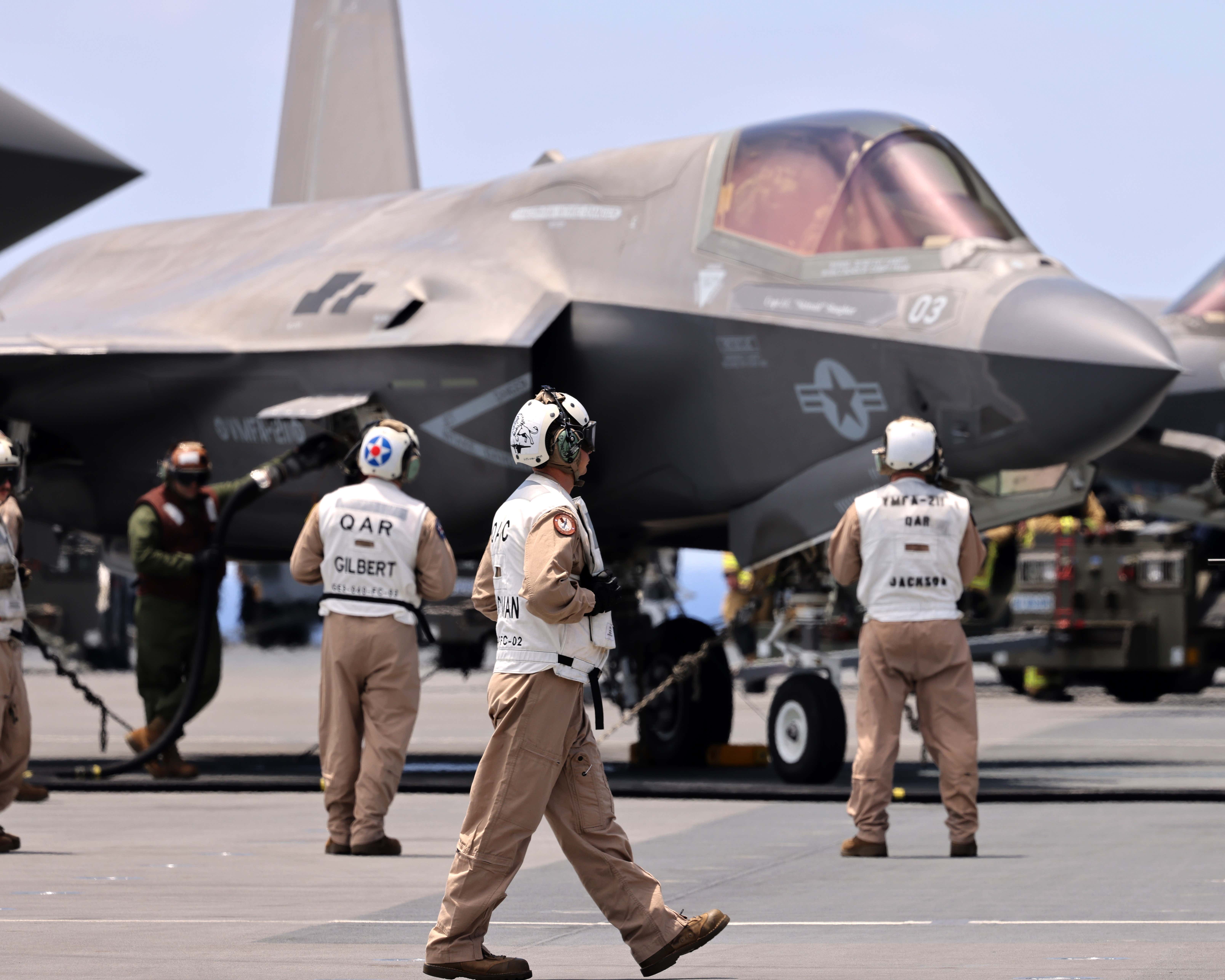
Crown Copyright
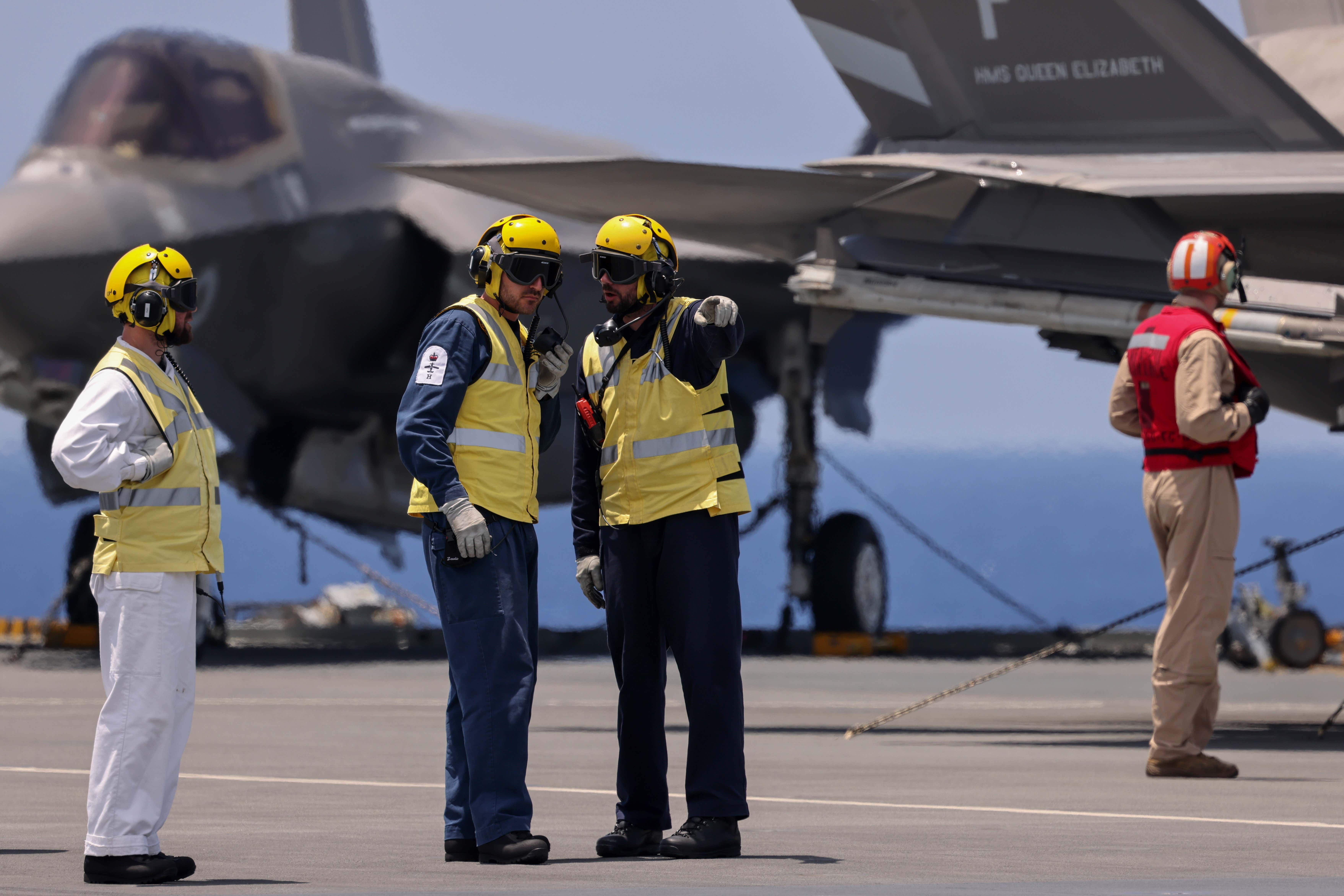
Crown Copyright
“We’re rubbing up against Russian activity, not in […] a dangerous or aggressive manner, but you’ve just got other people out here playing in what is a fixed piece of water and airspace,” Moorhouse added, describing the eastern Mediterranean as more “congested and contested” as a result of the Russian presence in Syria. Meanwhile, British and Russian pilots have come within “visual distance” of each other, according to Captain James Blackmore, commander of the Carrier Air Wing aboard HMS Queen Elizabeth.
“It’s that cat-and-mouse posturing, it’s what we expect in this region of the world. And as you can imagine, it’s the first time for F-35s into the eastern Mediterranean,” Blackmore explained. “So, of course, Russia wants to look at what they’re like, they want to look at what our carriers are like.”
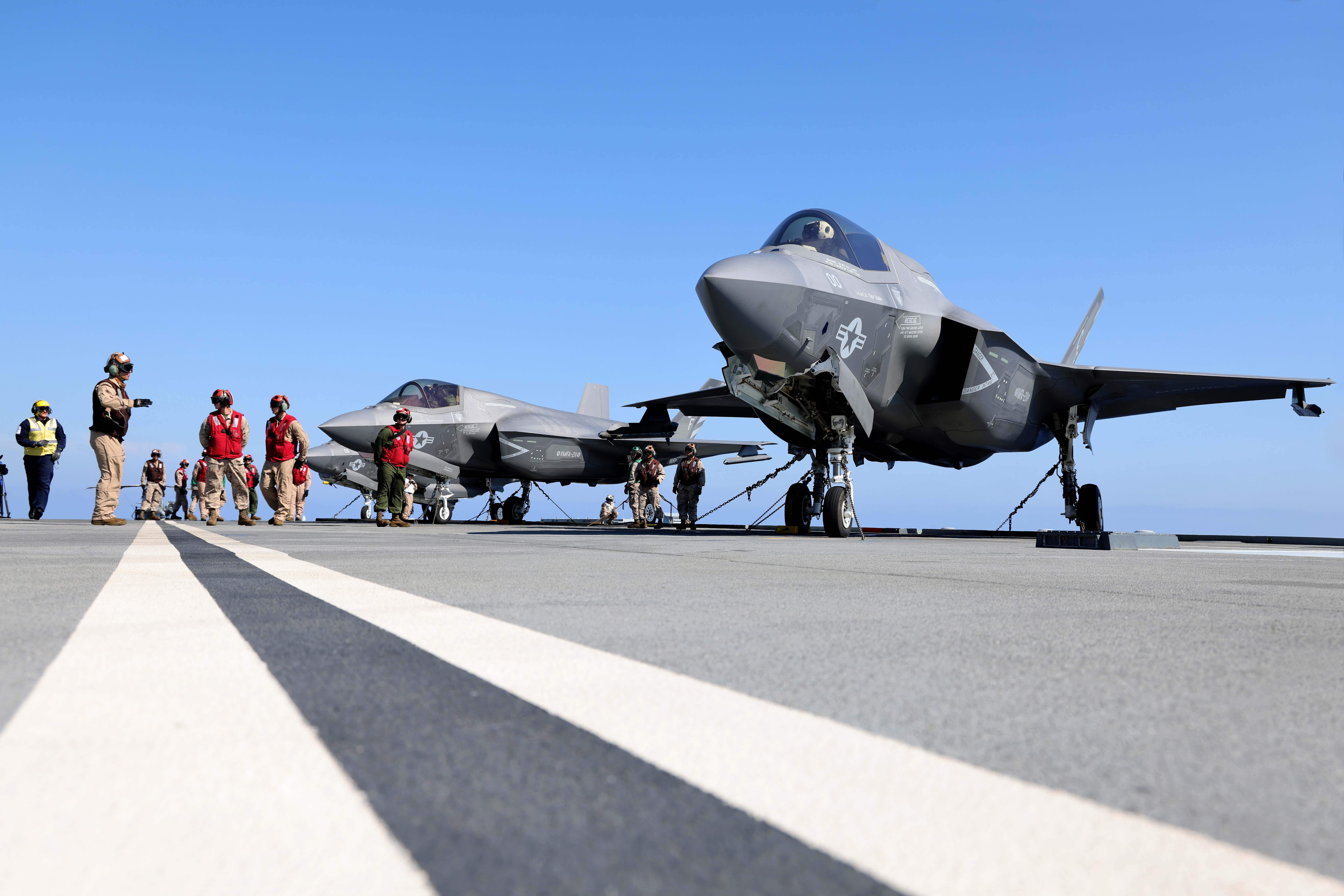
Crown Copyright
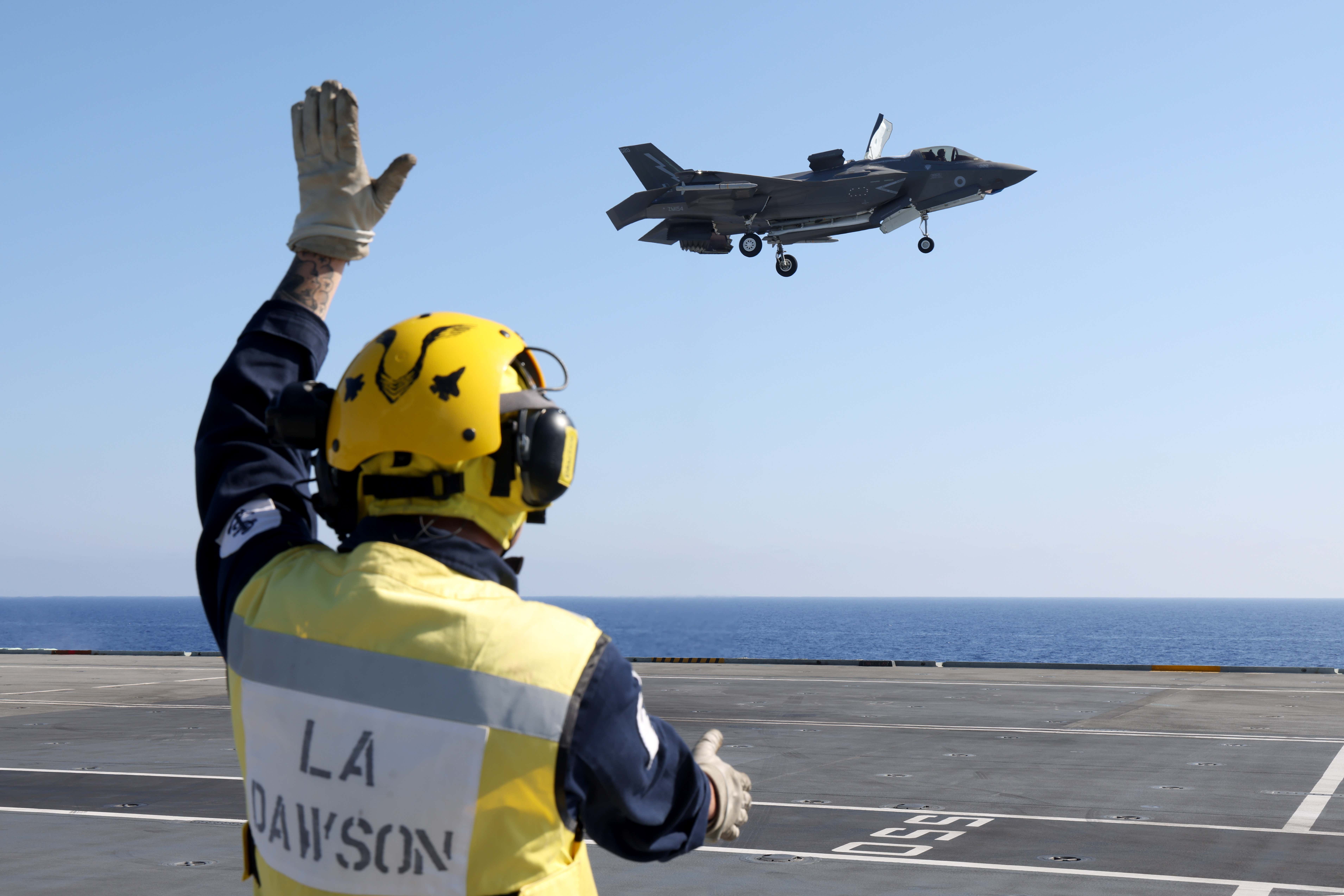
Crown Copyright
This planned combat deployment as part of the wider CSG21 cruise was announced by the U.K. government last month. “The F-35B Lightning jets pack a potent punch against Daesh and help prevent them from regaining a foothold in Iraq,” said U.K. Minister for the Armed Forces James Heappey, in a statement released on May 3. “This is a prime example of the U.K. Armed Forces stepping forward with our allies to confront persistent threats around the world. It is Global Britain in action.”
“This deployment represents the embodiment of the UK’s Joint Expeditionary Capability and utilizing the F-35Bs in the fight against Daesh will further demonstrate our commitment to securing their global defeat,” added Chief of Joint Operations, Vice Admiral Sir Ben Key.
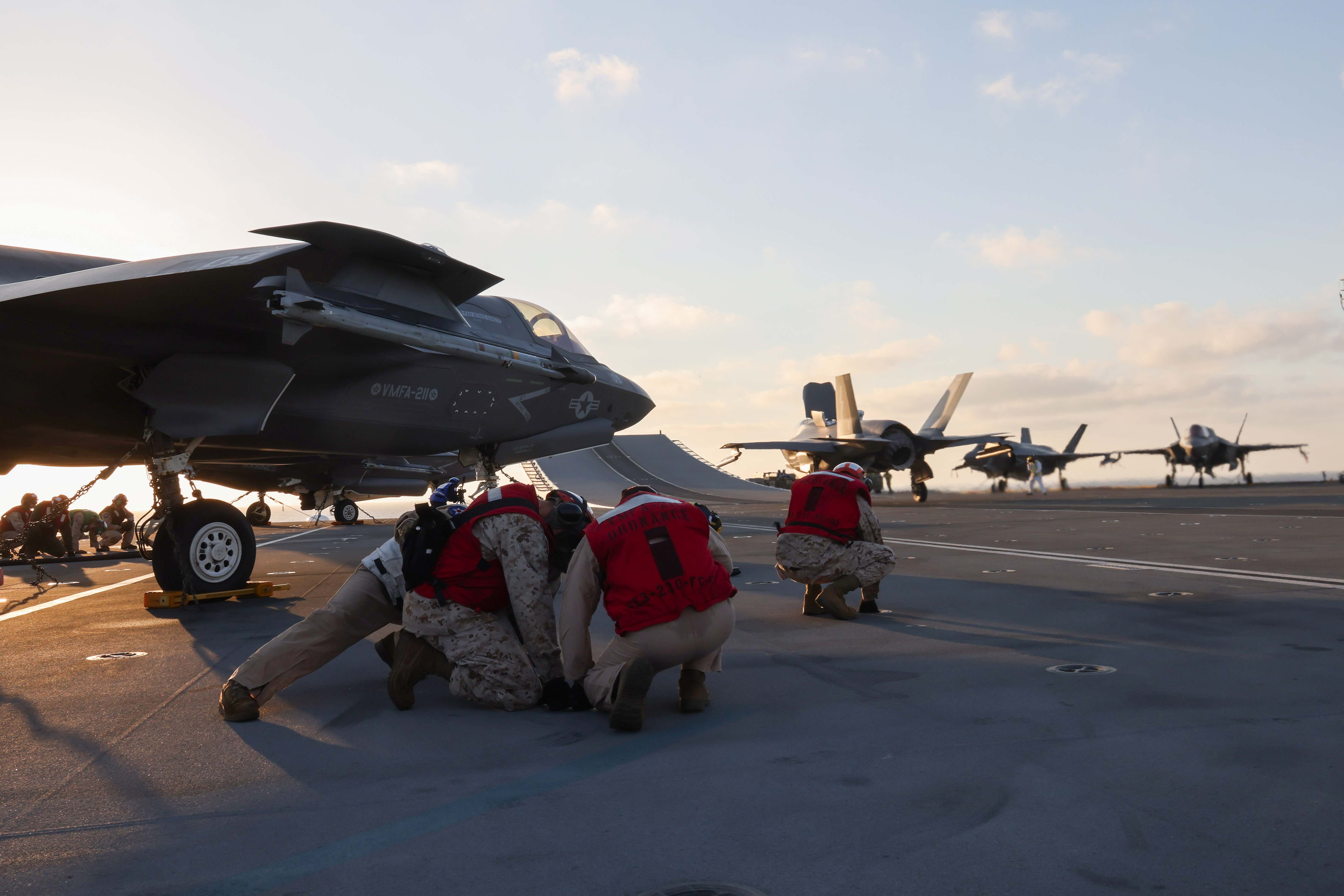
Crown Copyright
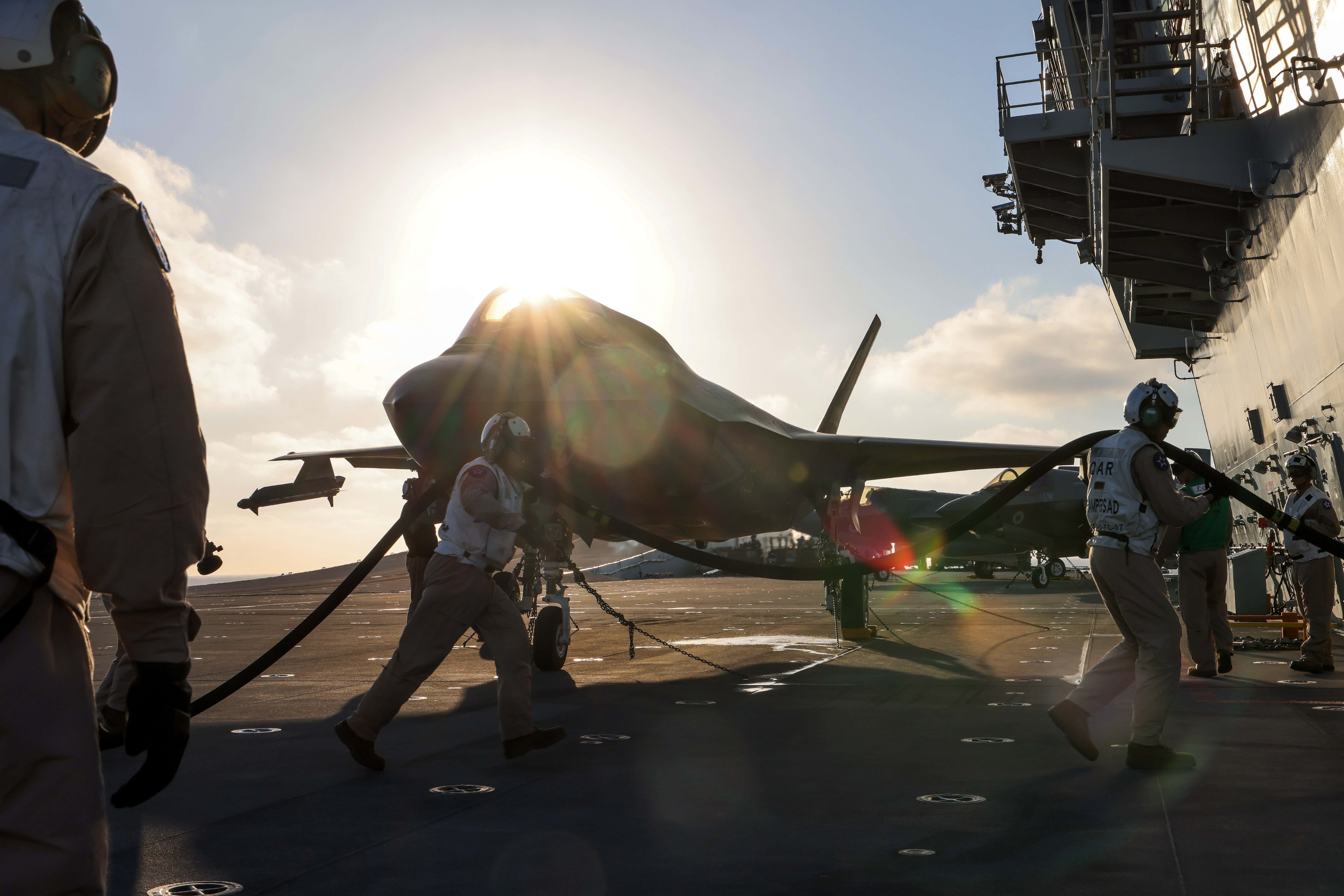
Crown Copyright
British-operated F-35Bs have previously taken part in combat missions over the Middle East, although from a land base. In the summer of 2019, as part of Operation Shader, the U.K.’s counter-ISIS campaign, the jets operated from RAF Akrotiri, a deployment you can read more about here.
CSG21 is expected to remain in the Mediterranean for another two to three weeks before continuing its maiden operational deployment, which will take it via the Suez Canal before making planned visits to Oman, Singapore, India, Japan, and South Korea, as well as cooperation with the armed forces from those nations.
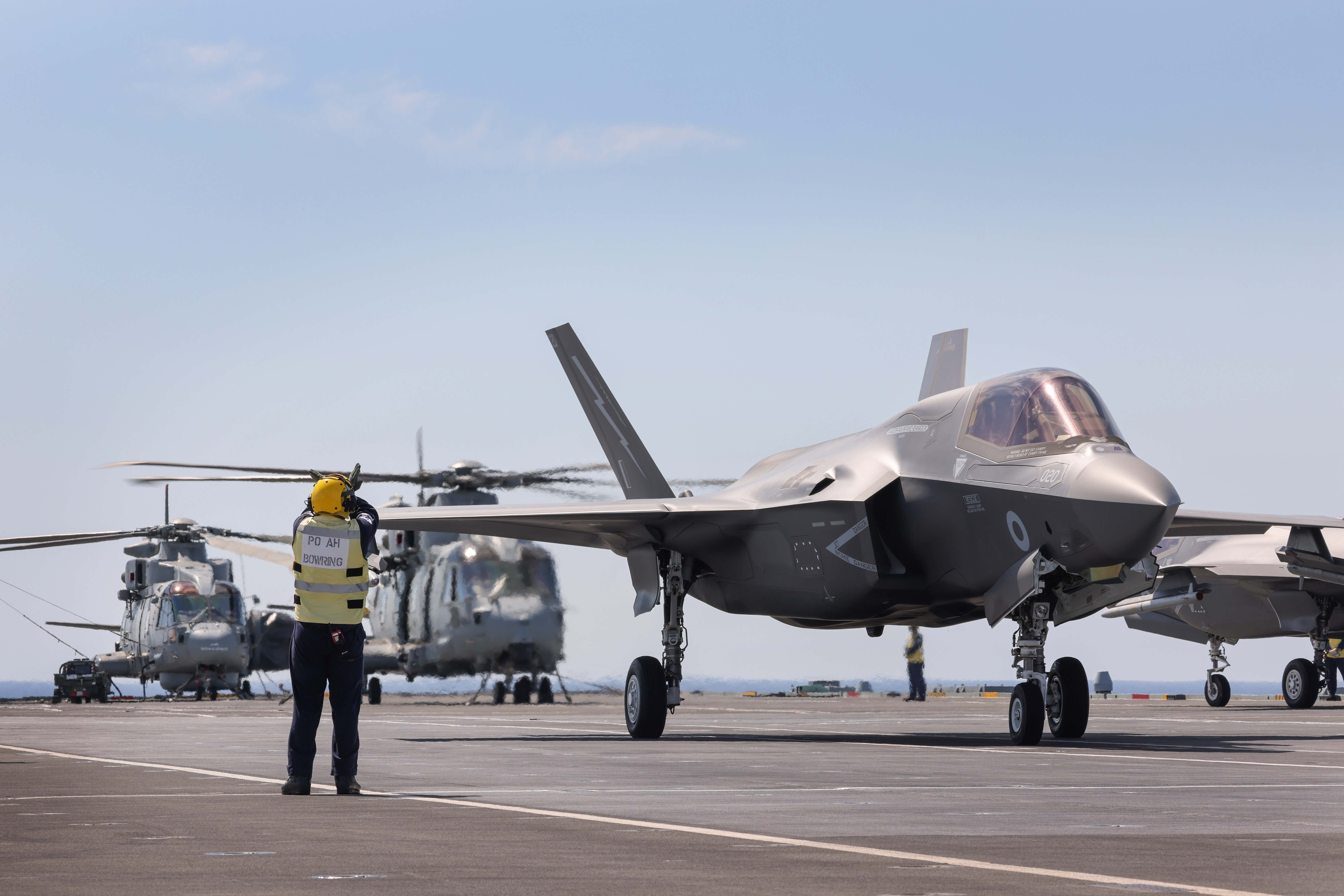
Crown Copyright
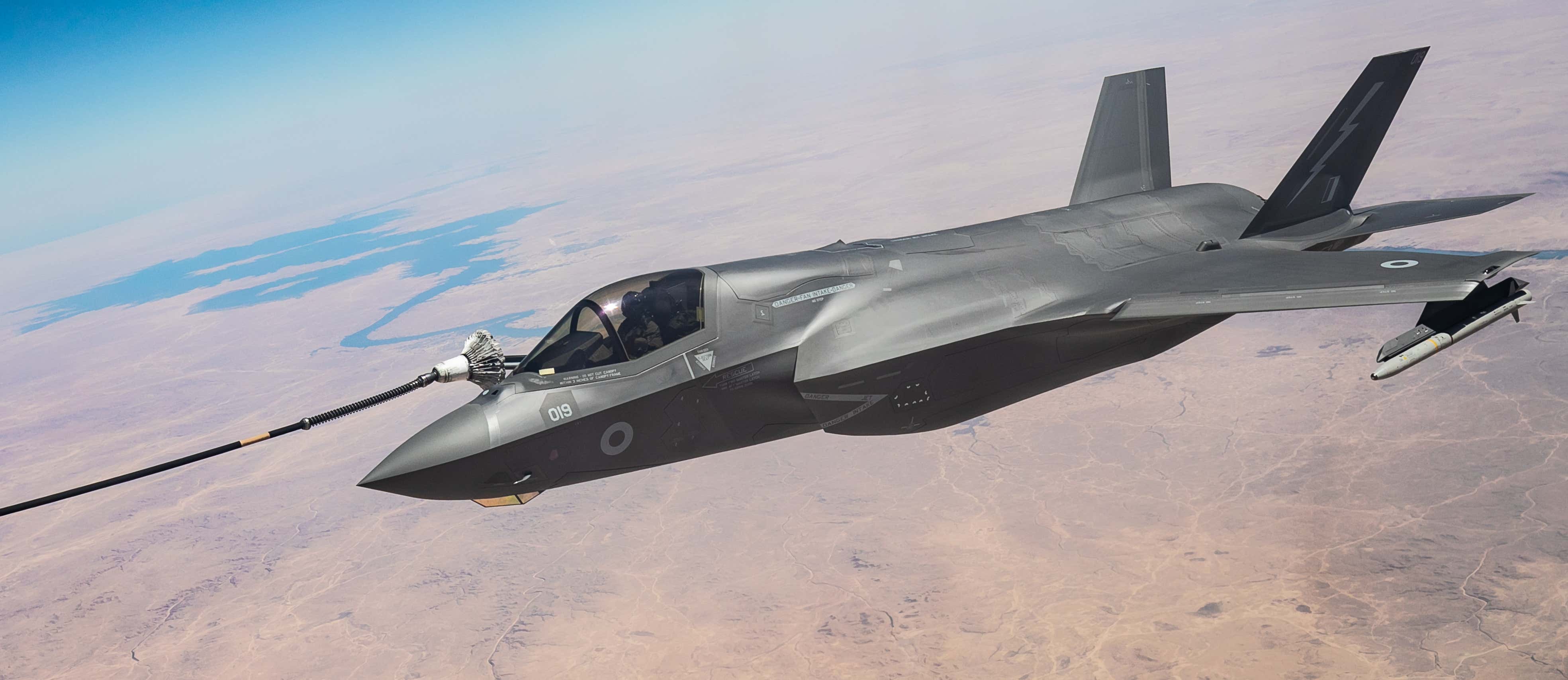
Crown Copyright
Until more details of exactly what kinds of combat missions the F-35Bs have been flying from the carrier become available, it’s hard to determine what impact they will have had on the campaign in Iraq. We don’t yet know how sustained this is, or what kinds of sortie generation rates have been achieved.
When the planned combat missions were pre-announced, there was some concern that the effort might be a token one, but the switch in the focus of the U.S. military toward Afghanistan could have provided more opportunities for CSG21 to make a meaningful contribution. That there are still key ISIS targets in Iraq was demonstrated earlier this year, when RAF Typhoon fighter jets struck around 100 cave hideouts in a 10-day period, as well as launching Storm Shadow cruise missiles for the first time.
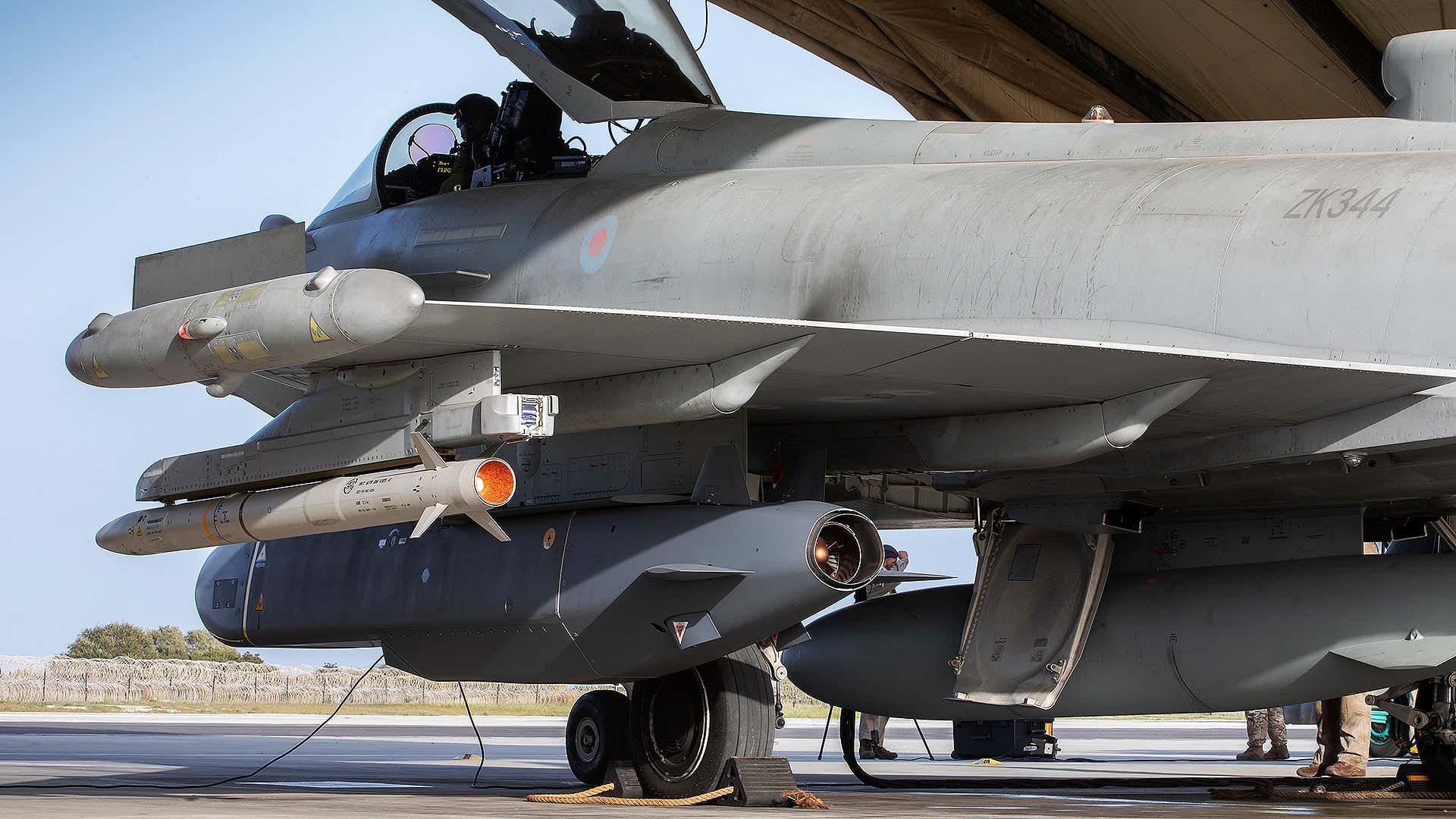
Crown Copyright
A Royal Air Force Typhoon FGR4 armed with a conventionally armed Storm Shadow cruise missile at Akrotiri earlier this year.
However, even a fairly tokenistic effort would involve going through the motions of actually preparing aircraft on the ship for combat, launching them, and then recovering them under real-world conditions, and can only provide useful lessons learned for refining the tactics, techniques, and procedures for future operations from HMS Queen Elizabeth and sister vessel HMS Prince of Wales, which is now undergoing its first fixed-wing flight trials. The same learning curve applied to the entire strike group, which has been working to integrate to monitor for potential threats, like the Russian presence in the Mediterranean.
Furthermore, bearing in mind the proximity of Russian forces, the F-35B’s availability as an information-gathering tool probably makes it a very useful asset in this theater, even if this kind of capability is not a prerequisite of anti-ISIS missions.
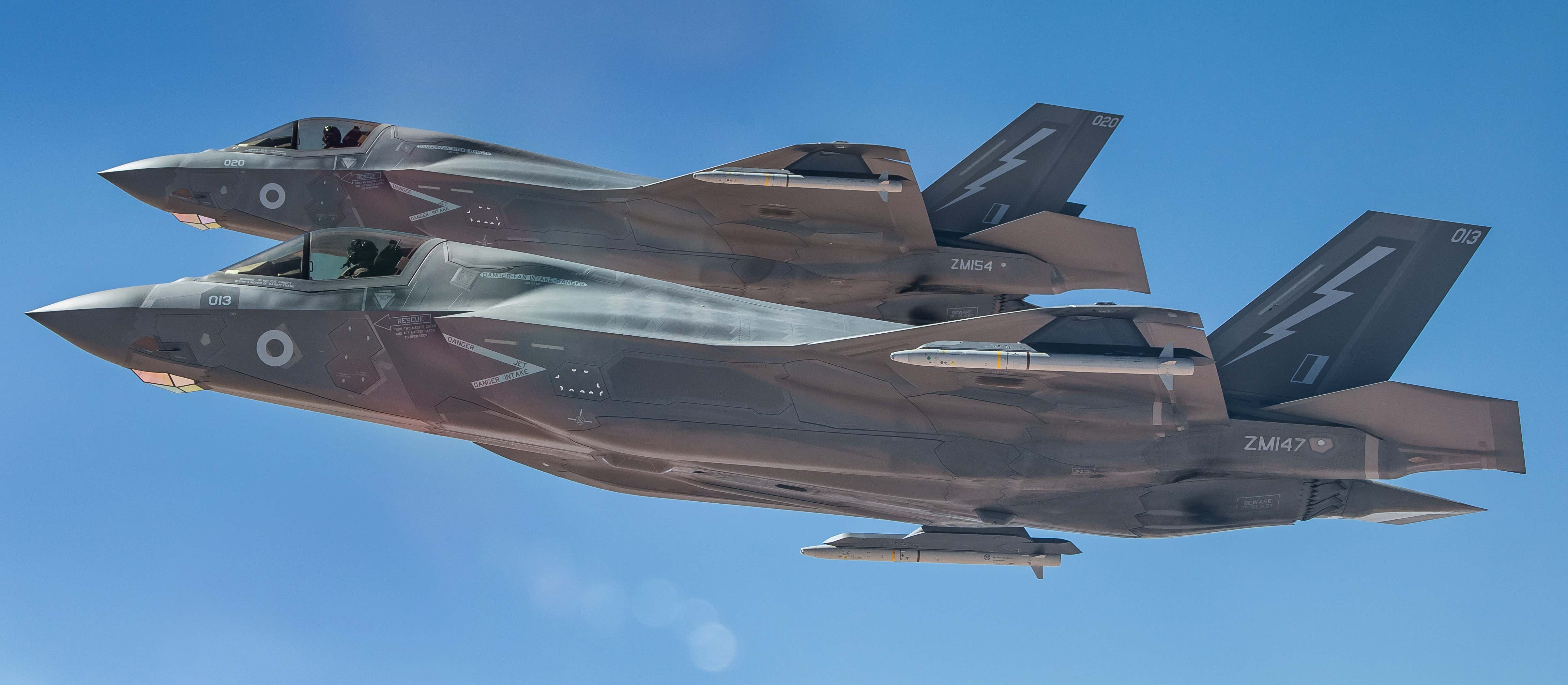
Crown Copyright
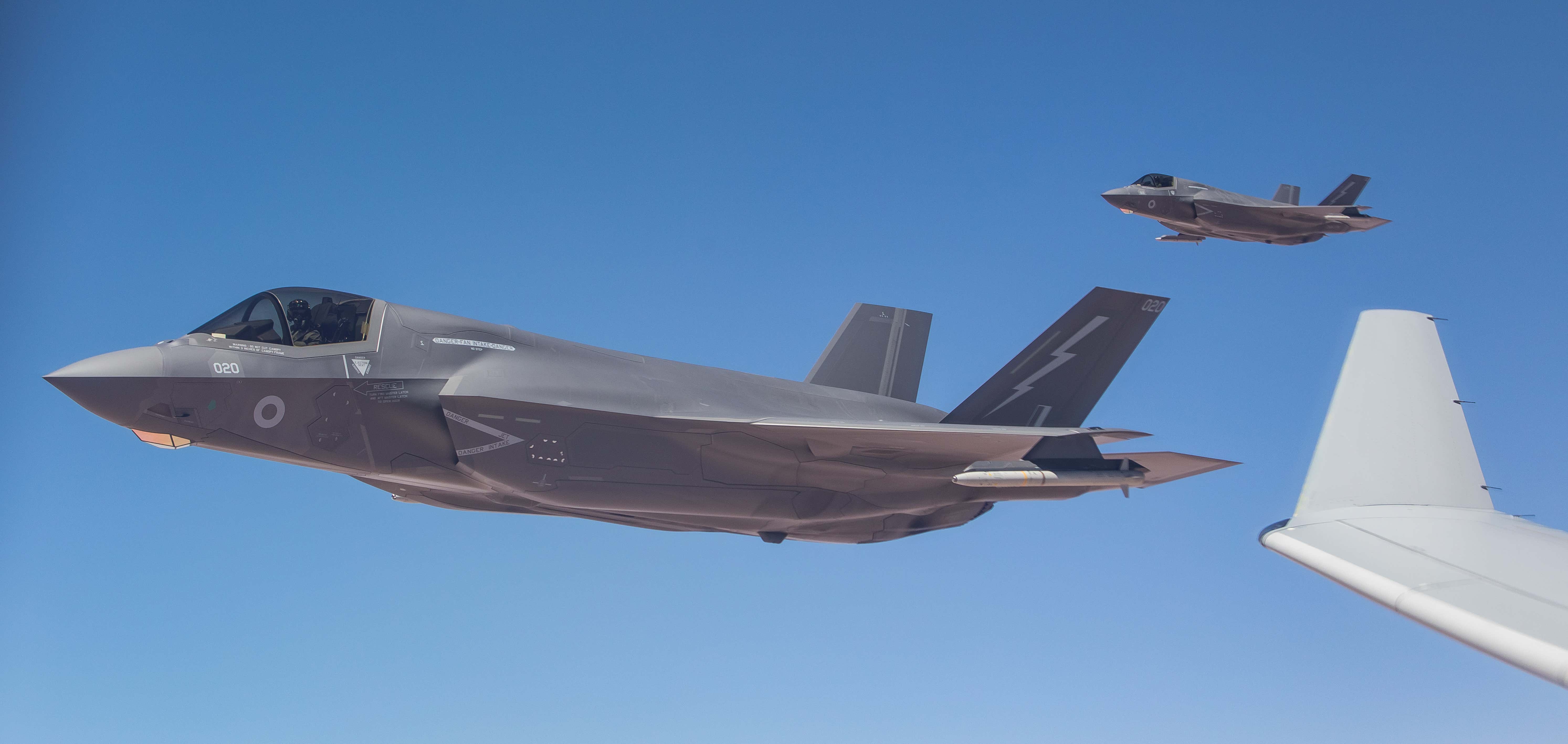
Crown Copyright
What is noteworthy, however, is that even in a combat operation fairly close to the United Kingdom, and in a relatively benign environment, a significant role is clearly being played by land-based aircraft: the aforementioned AWACS and Rivet Joint for surveillance, plus Voyager tankers.
A case could be made that very similar effects could be brought to bear by having F-35Bs flying missions from an airbase on Cyprus, as they did in 2019. Meanwhile, ensuring critical support assets are on hand is not such a problem in the Mediterranean, but could be a very different story in the Indo-Pacific region, for example, where aerial refueling support would be even more critical.
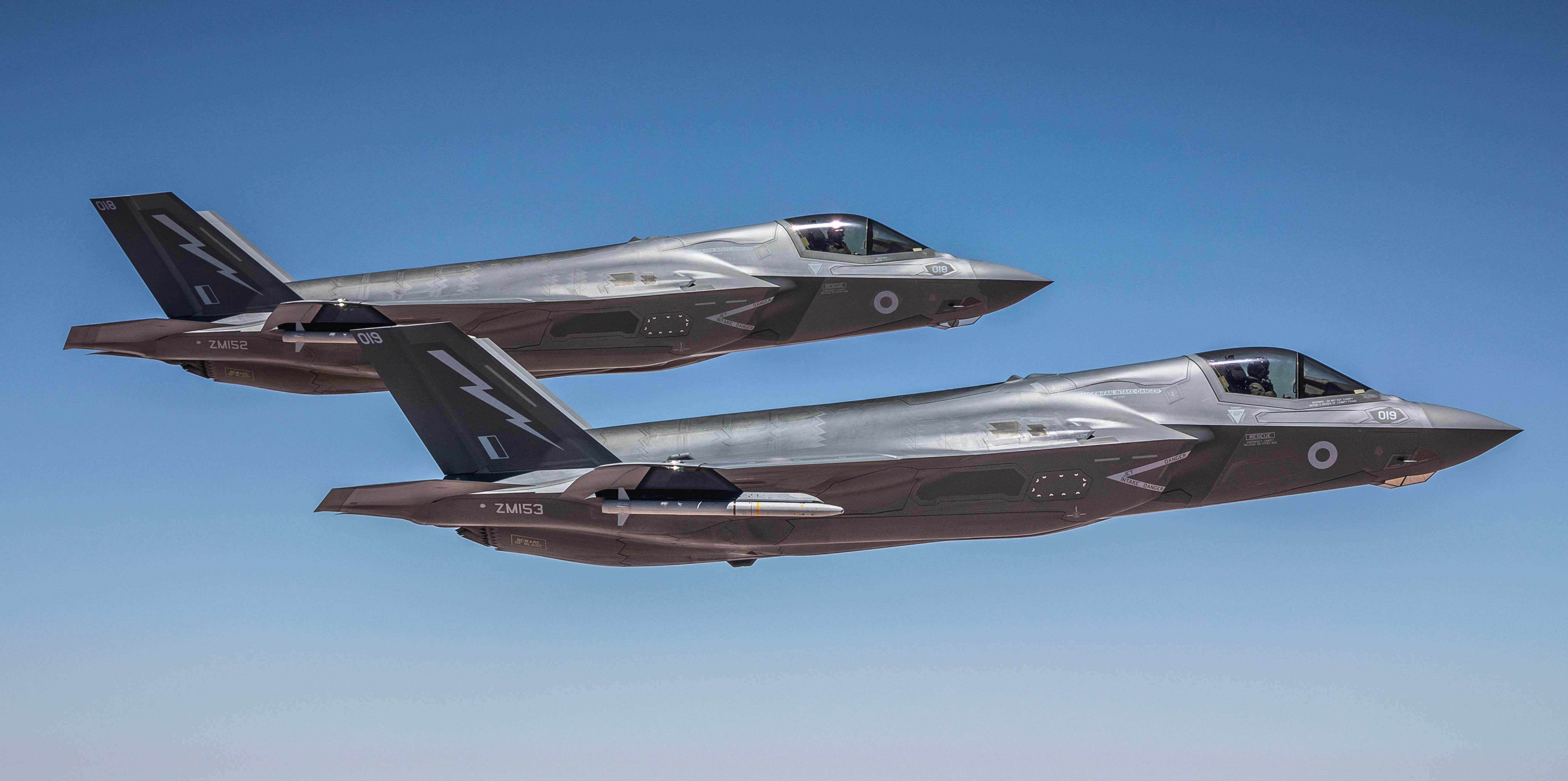
Crown Copyright
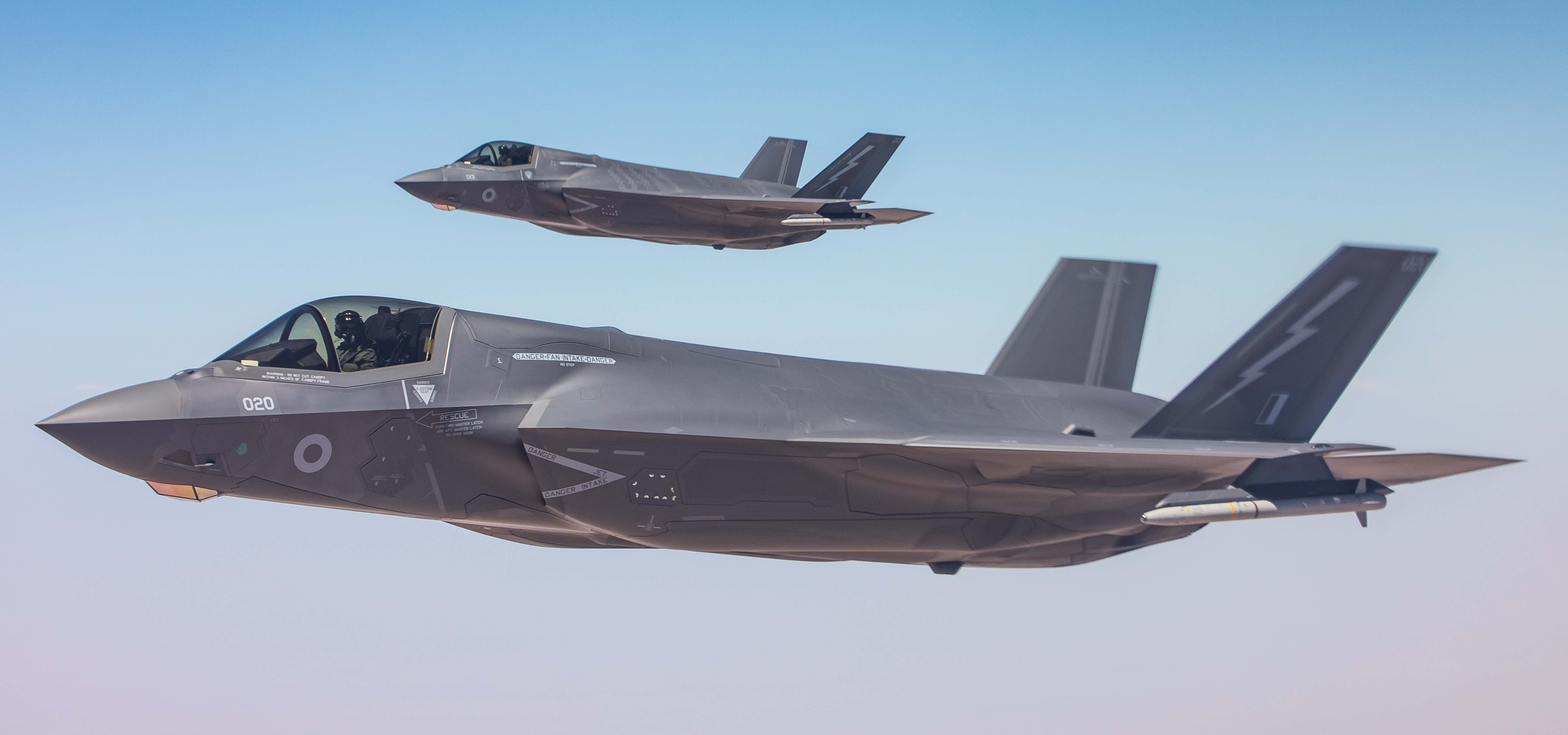
Crown Copyright
Nevertheless, the United Kingdom has proven that HMS Queen Elizabeth, and the wider Carrier Strike Group, are ready for combat operations. That is an important messaging tool in itself and provides weight to the U.K. Ministry of Defense’s claim that the CSG21 is “committed to confronting persistent threats around the world and [will] make a meaningful contribution to global security.”
More concretely, after more than two decades, the United Kingdom has returned to fixed-wing carrier-based combat operations, after having given up this capability entirely in 2010, with the decision to retire its last Harrier jump jets. Regenerating that capability has been a huge effort, and an extremely costly one, but the first of the country’s two aircraft carriers is now combat-proven. Although many details of the operation are still to be revealed, the United Kingdom’s first use of carrier-based combat airpower in a long time is significant in its own right.
Update, 12:45 pm PST: Further details of these milestone combat sorties have been provided by the U.S. Marine Corps, confirming that “counter-ISIS and protective overwatch missions” were launched from HMS Queen Elizabeth in the Sixth Fleet area of operations on June 18, in support of Operation Inherent Resolve. Accompanying photos show F-35Bs from VMFA-211 being armed with live munitions including GBU-12 Paveway guided bombs, Joint Direct Attack Munitions (JDAM), AIM-120 AMRAAMs, and AIM-9X Sidewinder missiles.
Contact the author: thomas@thedrive.com

